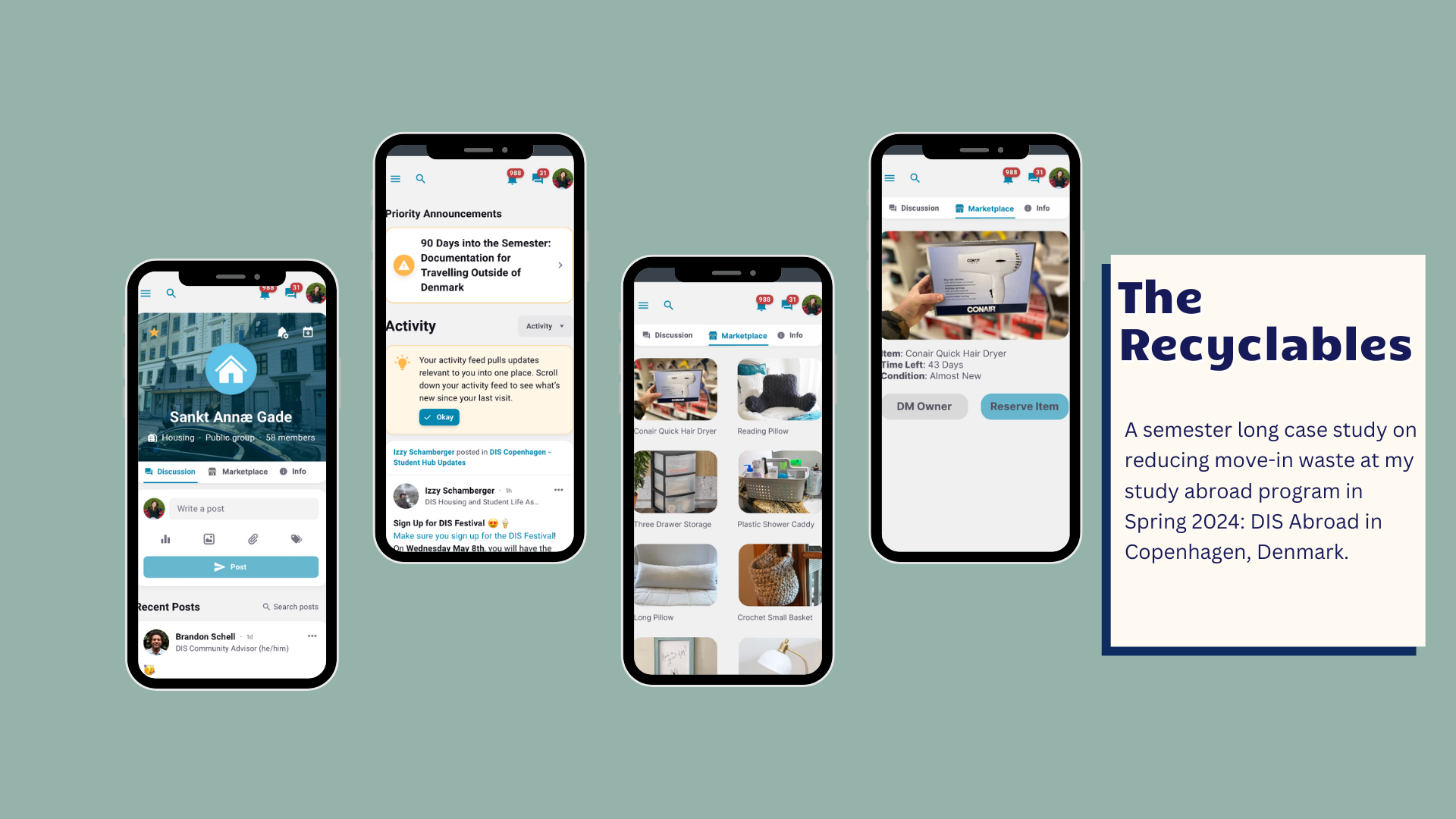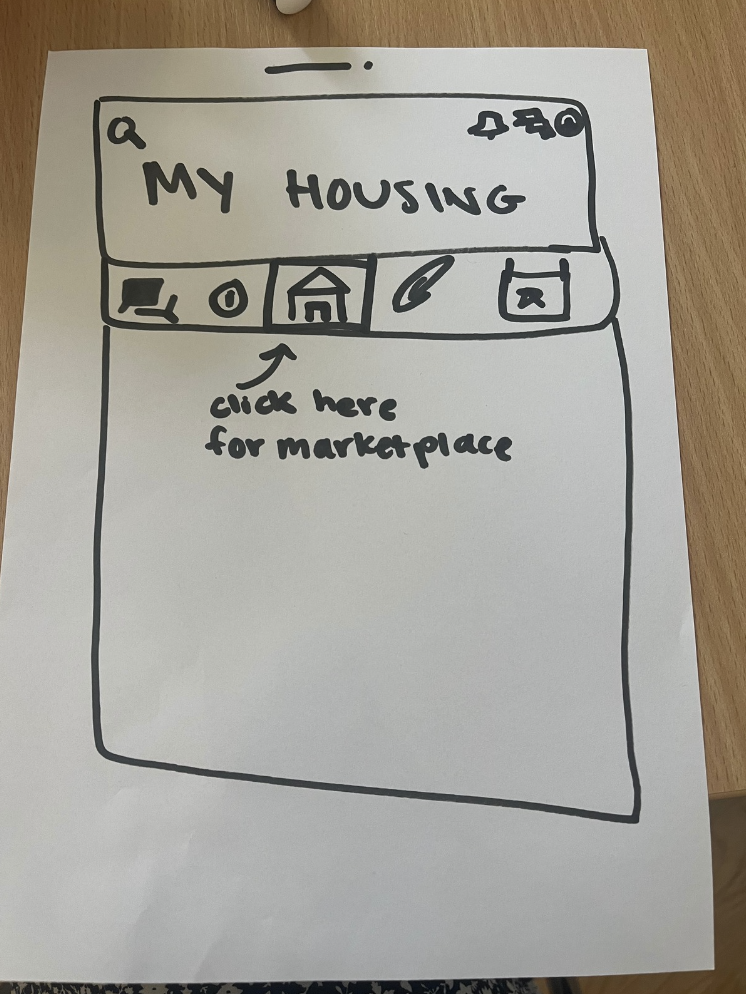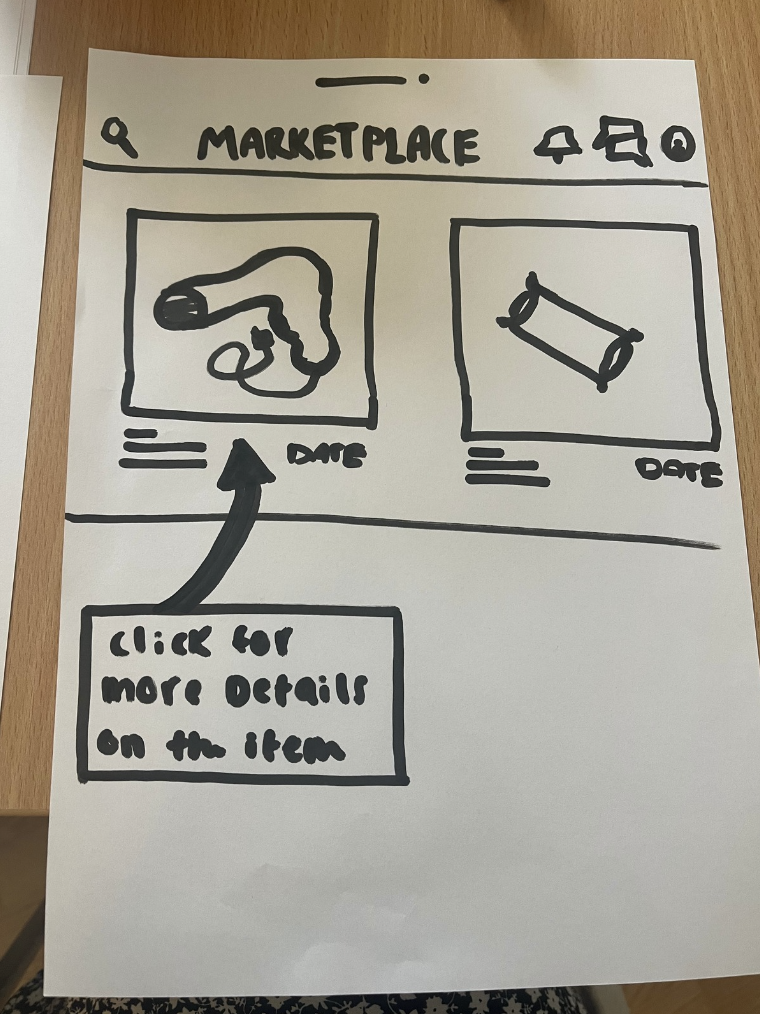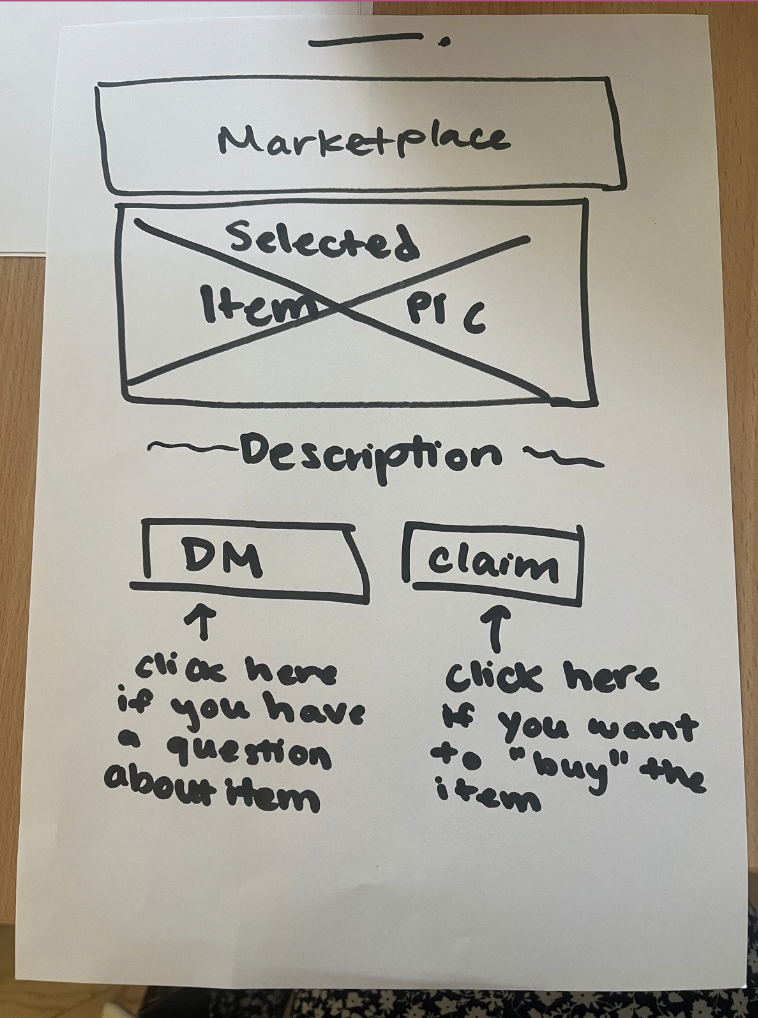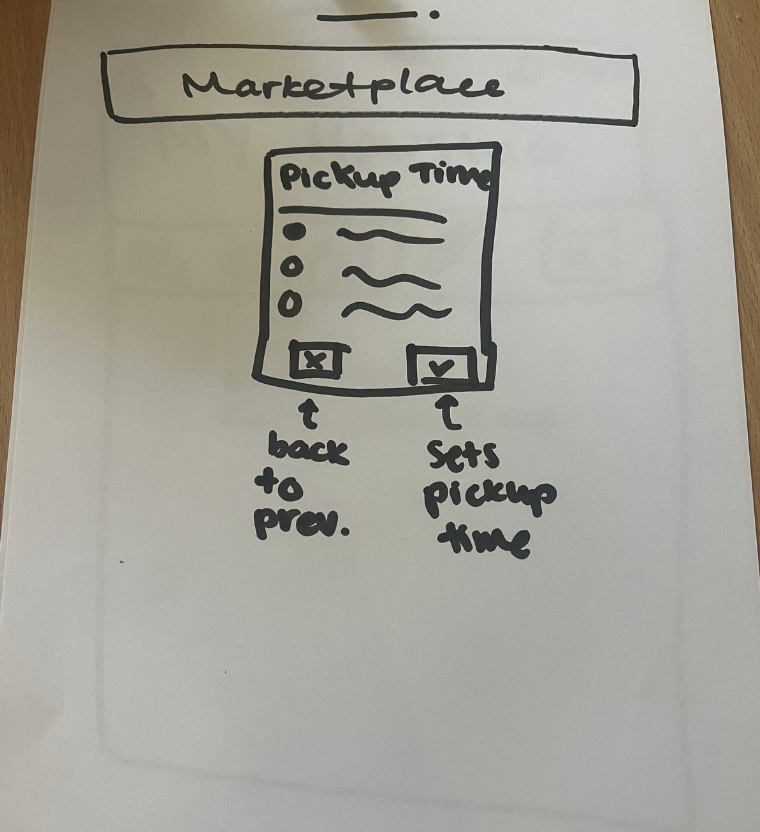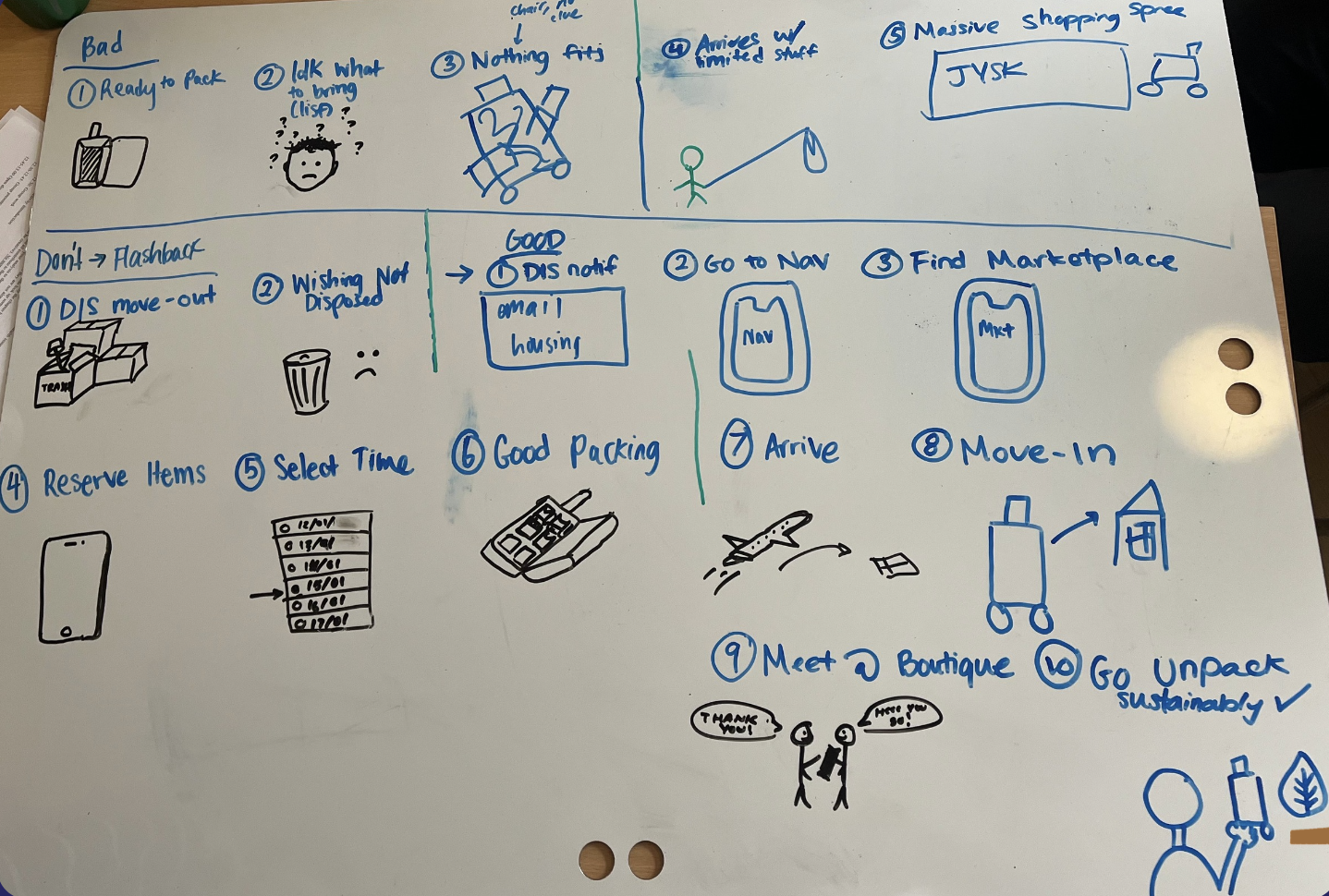Time frame — 12 weeks, Role — UX designer, researcher, illustrator, reporter
Reducing Excessive Move-In Waste
a Proposed Digital Marketplace for DIS Copenhagen Students
Project Synopsis: How can we streamline the process of exchanging second-hand furniture and goods among study abroad students to reduce excessive move-in waste?
Skills: Design thinking, ideation, paper prototyping, Figma, storyboarding, user testing, feedback integration
The Problem
Study abroad students often face the challenge of acquiring new furniture and goods for temporary housing, which leads to significant waste at the end of their stay. At the Danish study abroad program DIS, how might we reduce a student’s initial move-in waste while ensuring students' optimal study abroad environment?
User Group
Our target group is college students who study abroad in the DIS Copenhagen program.
50% of DIS students surveyed had purchased more than 8 household items moving in
86.7% believe that certain household items can be reused from previous students
Empathy map after conducting in depth contextual interviews
Contextual Interviews
Key Takeaways
While users claimed their recycling habits have gotten better at DIS, their carbon footprints also increased since going abroad
Many users agreed on how they would use pre-owned items instead of buying new ones, but many didn’t know where they could find this
The largest contributor to their consumption habits stemmed from moving in:
Accessibility to needed items
Pressure to conform to Danish styles
Limitations in packing space and quantity
Changes in lifestyles
Ideation
Based on synthesizing user research, contextual interviews, and a group ideation session, we focused on solutions that addressed:
A lack of access to public donation rooms
Limited public knowledge on the existence of public donation rooms
Varying comfort levels in what can be reused
We categorized each type of solution into relevant areas such as incentives, education, and eliminations.
We brought in guests relevant to the user group to engage in an ideation brain dump.
Creating a Low Fidelity Paper Prototype
Storyboarding
We created a chronological scene of events to tell a story of a user’s journey. It helped us display the way we ideally envision a user’s interacting with the proposed digital marketplace.
The storyboard I illustrated for the process of a user engaging with the digital market
The marketplace feature I designed in Figma
High Fidelity Prototype
Visualizing a user’s interaction in Figma
I used Figma to bring our prototype to life. This allowed me to replicate how a user interacts with the product in an accurate and detailed manner, as many aspects were filtered out in the paper prototype.
Result & Takeaways
